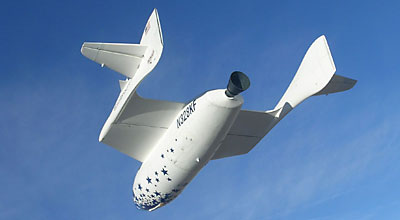The lessons we (should have) learned in 2003<< page 1: Lesson 1: Space transportation is broken (part 1) Lesson 2: Space transportation is broken (part 2)For expendable launch vehicles (ELVs), 2003 was not a bad year, but it was not a particularly good one, either. Only two of the 62 ELV launches in 2003 failed: a Chinese KT-1 small launch vehicle in September and a Japanese H-2A carrying two intelligence satellites in November. The Ariane 5 returned to service in April after the failure of the first Ariane 5 ECA launch in December 2002, although the ECA variant is not scheduled to fly again until this year. The Atlas 5 and Delta 4 EELVs also racked up two successful launches each in 2003. These successes, though, masked deeper problems with the worldwide launch industry. The industry continues to suffer from a glut of vehicles that have sharply driven down prices—Malaysian communications company Binariang reportedly bought a Proton launch in September for less than $50 million—without stimulating additional demand. Governments in both the US and Europe have both been forced to consider spending potentially billions to support launch services originally envisioned to be commercially self-sufficient. Moreover, there are few prospects of returning to the go-go years of the 1990s, when commercial and overall launch activity was significantly higher.
This is not a new problem—it has been in the makings since the bottom fell out of the commercial launch market at the beginning of the decade—but 2003 made it clear the problems are substantial and long-term. More importantly, those problems will also be difficult to solve, so don’t expect much progress here in the coming year. Related articles:
Lesson 3: Suborbital is on the way upThe events of 2003 may not have completely erased the doubts that a manned suborbital RLV could be developed, but those events went a long way towards extinguishing them. Burt Rutan’s company, Scaled Composites, unveiled its X Prize competitor, SpaceShipOne, in April; after a series of captive carry and glide tests, it performed its first powered flight on the 100th anniversary of the Wright Brothers’ historic flight in December. Rutan is not alone: several other competitors, including Armadillo, Starchaser, Canadian Arrow, and Da Vinci, all made progress in 2003, and new teams entered the competition as late as December. XCOR Aerospace, not an X Prize competitor, made news of its own in October when the FAA notified it that its launch license application was complete enough for the agency to decide whether to award a license. What these events show is that the three key factors of suborbital RLV development—technical, economic, and regulatory—are now falling into place. Vehicle technology has progressed to the point where vehicles can be developed relatively inexpensively—perhaps a few tens of millions of dollars—which allows ventures to more easily raise funds from well-heeled angel investors (such as Paul Allen, who is funding SpaceShipOne), or even self-funded (as is the case of John Carmack’s Armadillo Aerospace.) The FAA eased regulatory uncertainty in the fall by concluding that suborbital RLVs should be licensed as launch vehicles, not aircraft, much to the satisfaction of most vehicle developers.
Most observers believe that Rutan has the inside track for winning the X Prize some time in 2004. Even if, for some reason, Rutan falls short, there are a number of other viable efforts that could claim the prize before it expires at the end of the year. 2004 should be the year when suborbital spaceflight becomes a reality. The new challenge will be to ensure that these new suborbital vehicles can be commercially as well as technically viable, serving space tourism and other markets. Related articles:
|
|
